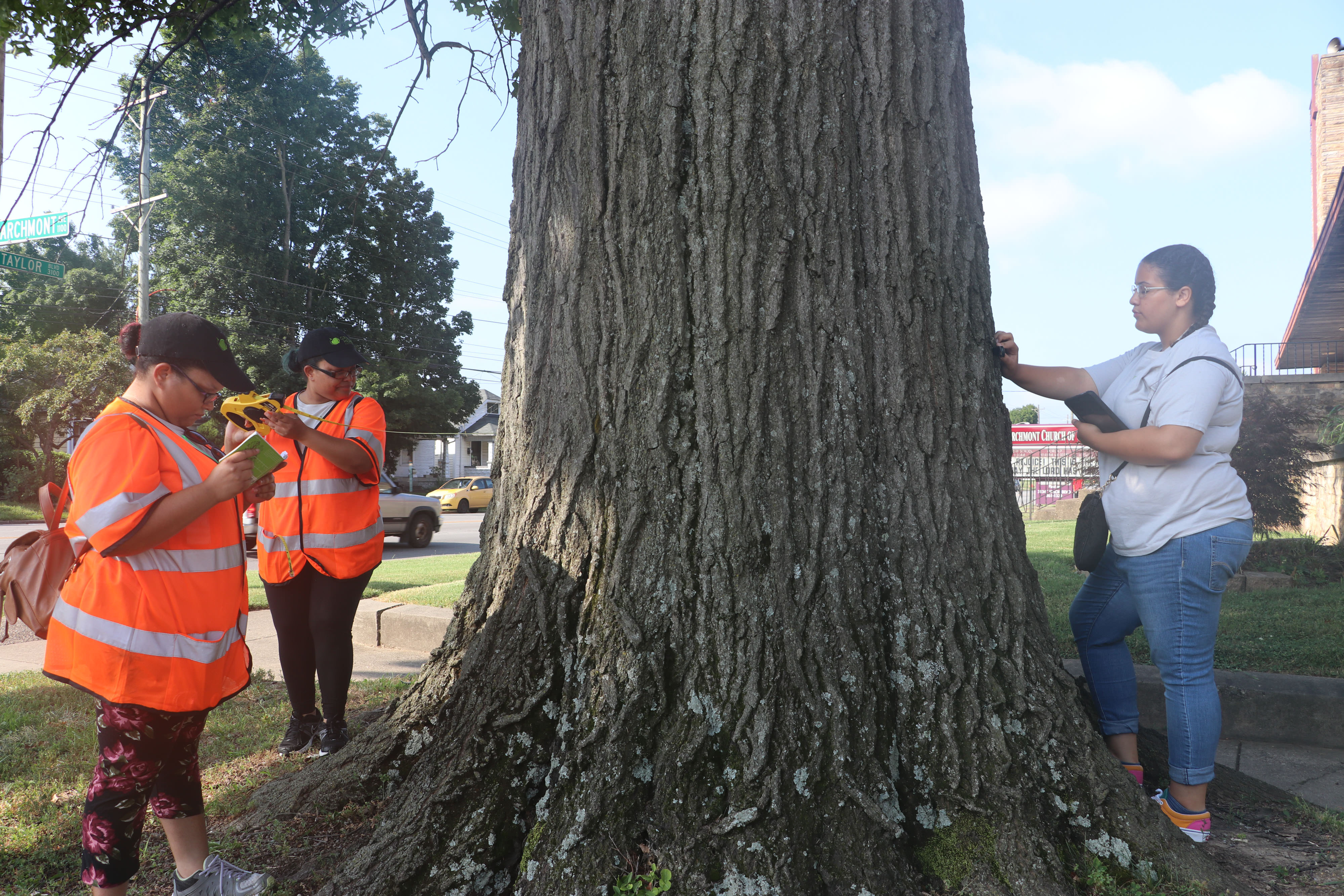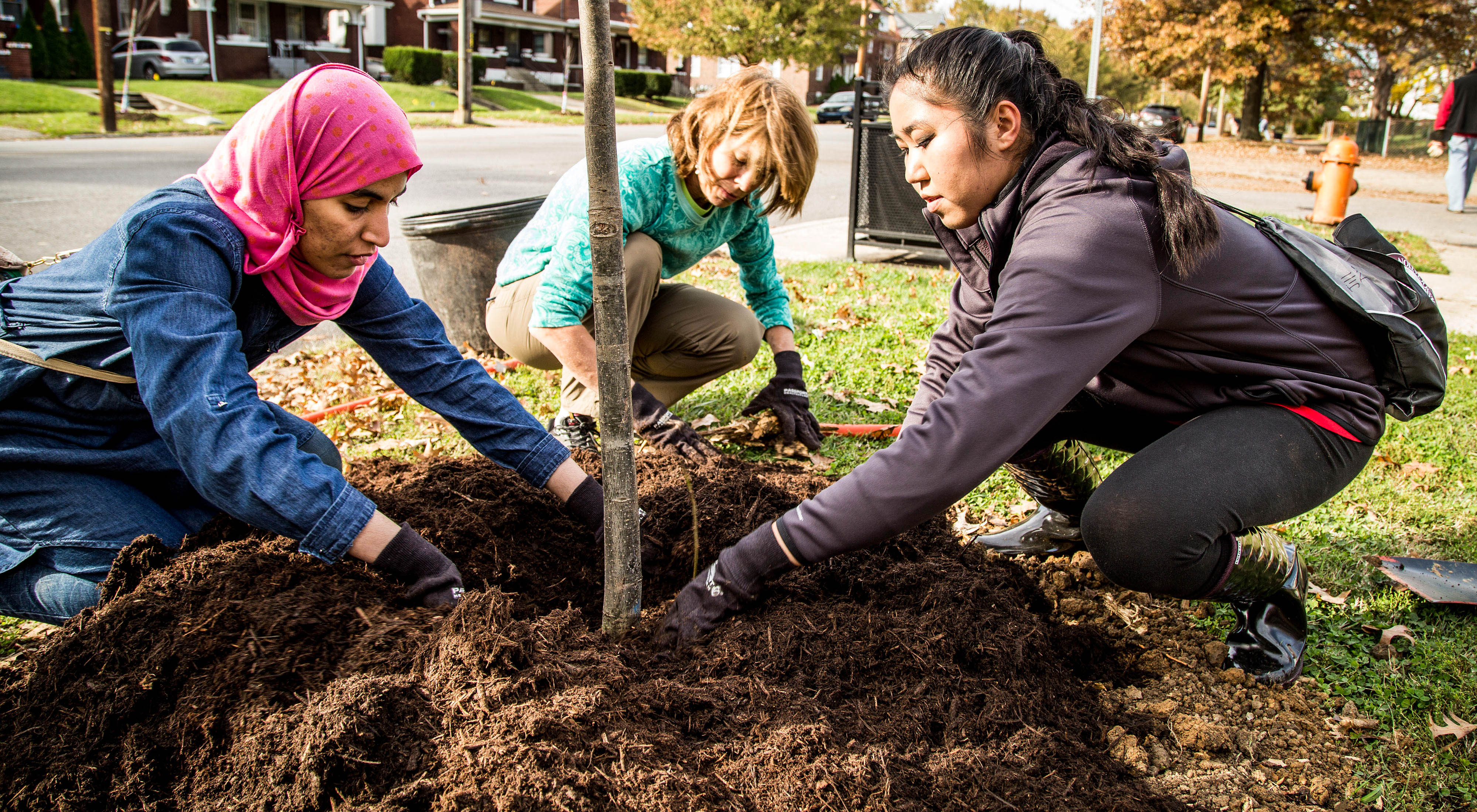Taking Inventory
A group of young people from YouthBuild recently monitored the health of Louisville trees for the Green Heart project.
The day was hot and humid when three YouthBuild interns accompanied case worker Michael Springer on a research outing in a South Louisville neighborhood. The Louisville, Kentucky nonprofit had hired the young people to do an inventory of the health of the neighborhood’s trees. The data they gathered would give The Nature Conservancy valuable information for the Green Heart project, a first-of-its kind study into the potential human health benefits of urban greening.
Measuring Tree Health
Charlotte Brown, 18, uses a tablet to record the group’s findings in an app designed by the U.S. Forest Service and The Nature Conservancy. TNC trained the interns on tree identification and using the app before the research began. Twin sisters Alynda and Alicia Rhodes, 19, wrap a thin yellow tape measure around a huge oak tree and call out the diameter measurement for Brown to record. Brown also types the tree species into the app and then locates it on a satellite map so TNC will know the tree’s precise location. Then the group studies several of the tree’s attributes. On a scale from one to five, they record the tree’s dieback, or the bare limbs and twigs they see. This particular oak has very little dieback, so the group decides to give it a one.
“What about leaf discoloration?” Springer calls out. “What do we think?”
Walking around the tree, the group identifies only small portions of brown leaves and decides to give the tree a one in this measurement as well. They also measure defoliation, or the holes in the tree’s leaves; crown light exposure, or how much sunlight the tree is getting; crown health or vigor; and crown transparency, or how much sunlight they can see through the tree. Brown then takes a picture of the tree from the app and the group moves on.
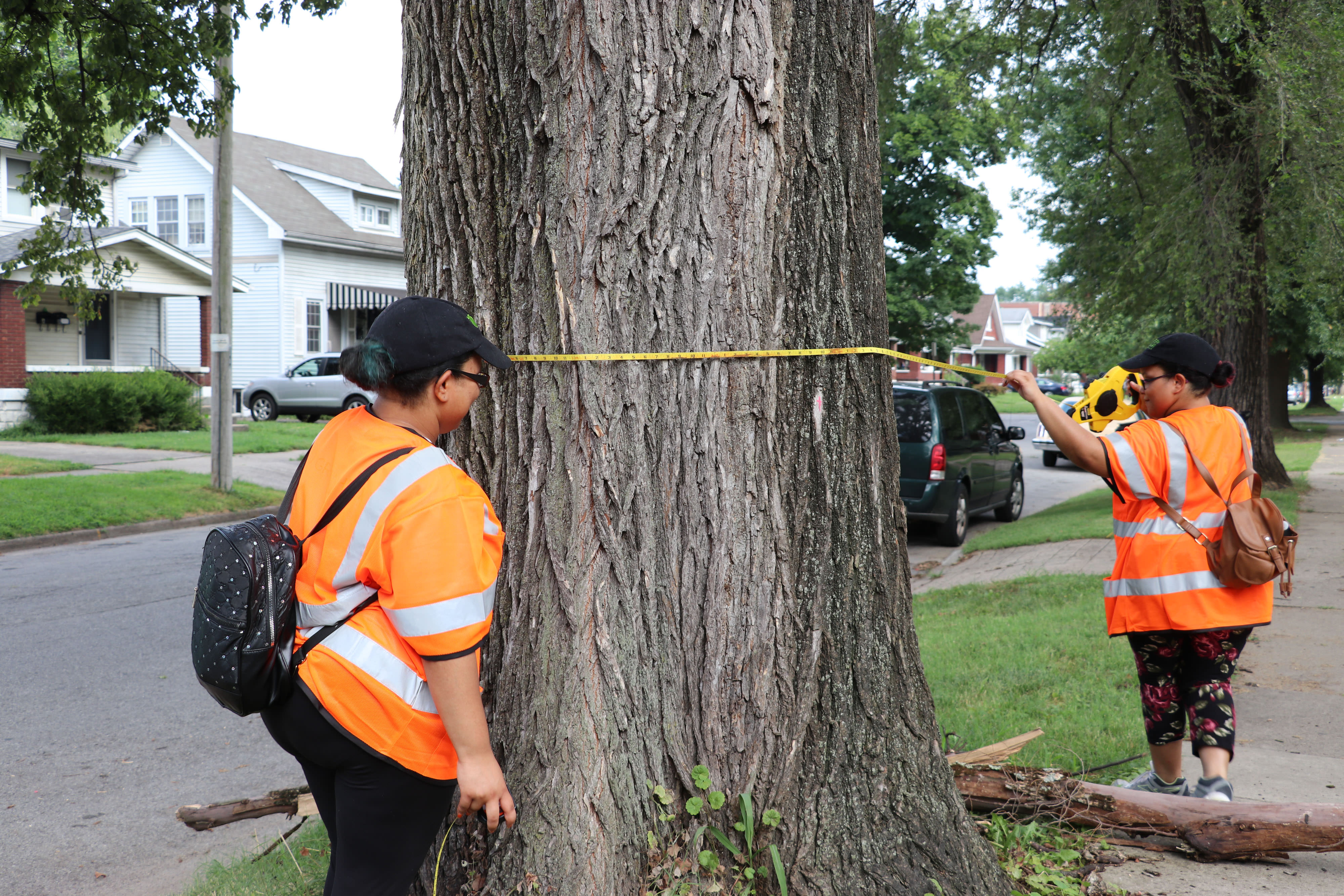
The Green Heart Project
The Green Heart project is focused in six South Louisville neighborhoods. The project, led by TNC, the University of Louisville’s Envirome Institute and other partners, will plant as many as 8,000 trees and shrubs and then study the potential health benefits experienced by residents. YouthBuild, a community nonprofit that matches area youth with education and job training opportunities, partnered with the SummerWorks program to recruit young people who lived in the Green Heart neighborhoods to apply for the tree inventory positions. Six young people were chosen to spend six weeks on the inventory, going out each day and assessing neighborhood trees in the public right-of-way.
Springer is also a resident of the Green Heart neighborhoods. He says working in his own neighborhood gave the project special meaning.
“It’s impactful, the trees being in my neighborhood,” Springer says. “I came into this knowing nothing about trees. There’s so much knowledge that I’ve learned so far.”
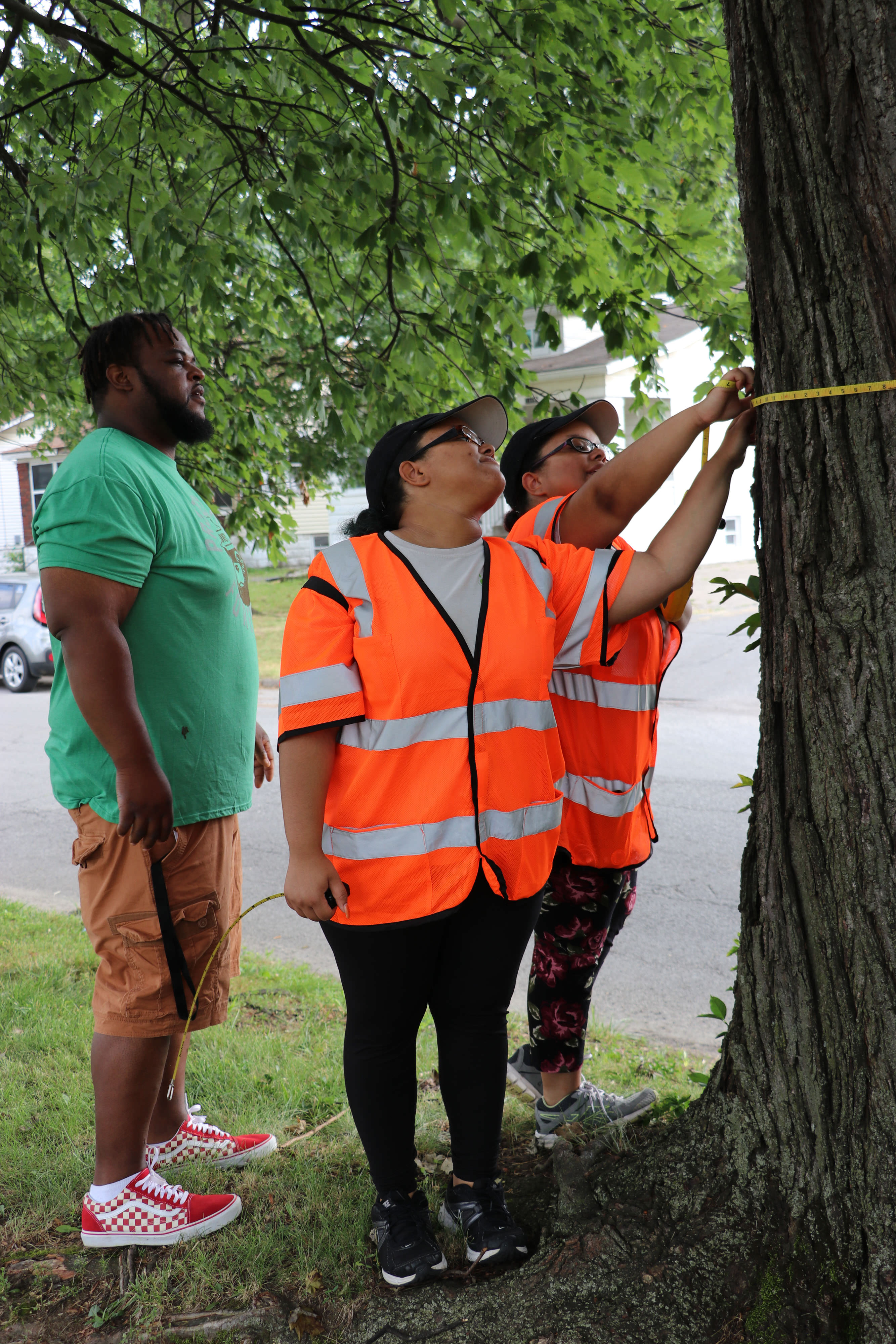
Learning About Trees
Springer and the interns all agree that tree identification has been the most difficult part of the job. Their training by The Kentucky Division of Forestry and TNC included a booklet that they refer to often in the field. The group got stuck, for example, on a silver maple because it had five points like an oak tree.
“After a week or two of doing it, though,” Springer says, snapping his fingers, “you automatically know what’s an oak, what’s a maple. You’ve got to be able to see the leaves and feel the leaves to identify. Even the veins help you identify the tree species.”
Chris Chandler, TNC’s urban conservation project director in Kentucky, was part of the team that trained the group. “These young people are actually trained in the way foresters are trained,” he says. “They’re looking at fine twig dieback and examining bark and twigs for pests.”
For Alynda Rhodes, learning something new drew her to apply for the job.
“I was interested in doing this because I liked the fact that I could learn about something I wouldn’t have thought about,” she says. “I’m going to college this fall, so I thought this could expand my horizons.”
Alicia Rhodes says the most positive part of the project was learning about the trees. “It was great to see that trees really do have a big impact on our lives,” she says. “We need to keep them for the future.”
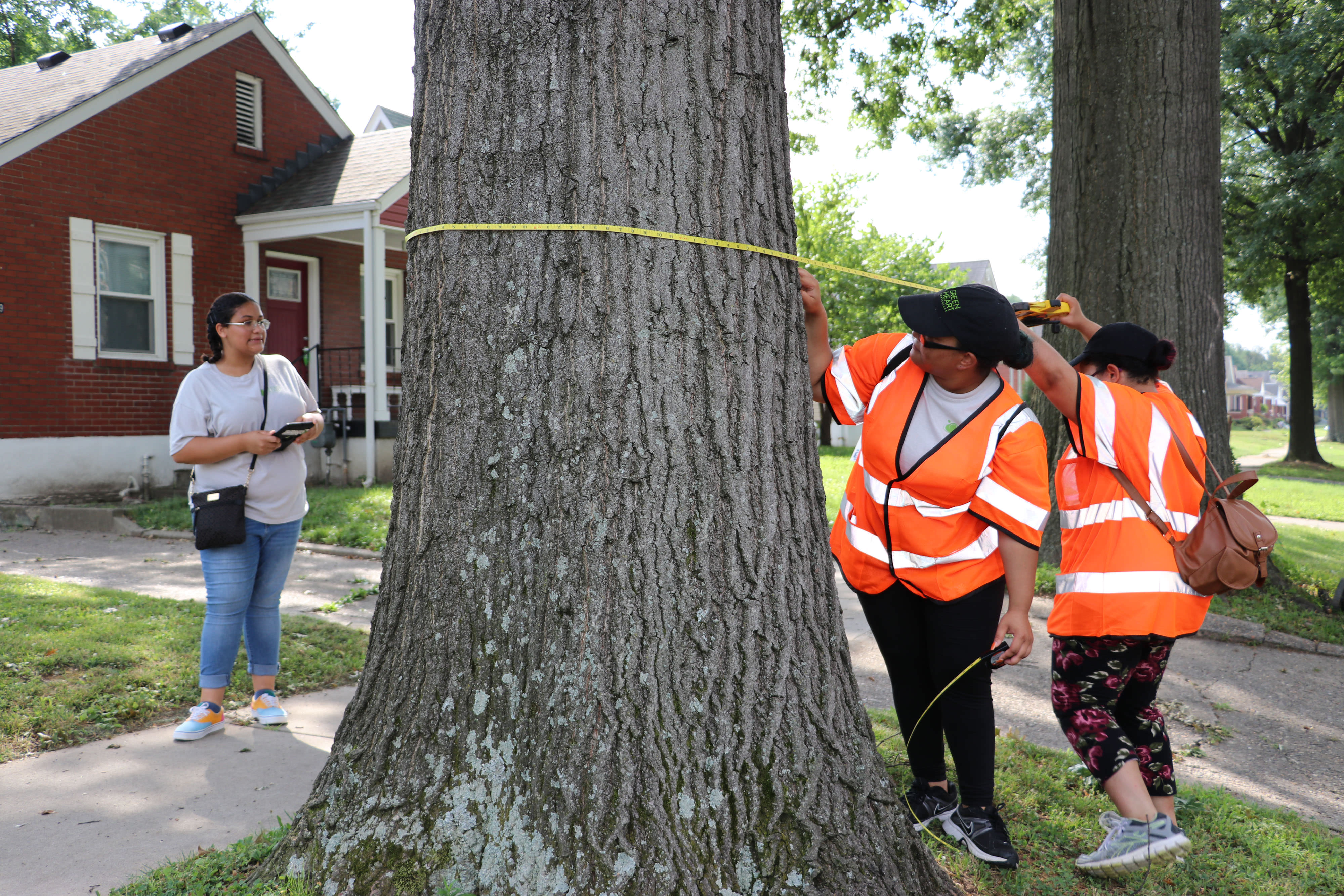
Using the Data
By the end of the project, the interns had gathered data on approximately 700 public trees in the project area. This data goes into a dashboard that TNC will use to better understand the health of trees in the Green Heart neighborhoods.
“TNC is using the data to manage the health of the existing forest resource,” says Chandler. “We can observe the health of the trees and identify if they are threatened. We’ll go out with an arborist and take a more careful look at the sick trees and prescribe treatment to help them get healthy.”
These treatments can be as simple as watering the tree, adding a mulch ring around the tree, or pruning. Chandler says maintaining these existing trees is important for the Green Heart project.
“These are the trees that are providing all of these benefits to us today,” he says. “Our newly planted Green Heart trees will take time to reach their full size. The biggest bang for our buck is maintaining current trees while planting for the future.”
The data is also being used by the U.S. Forest Service to understand urban tree health trends regionally and nationally. Teams in 12 cities are conducting the same type of research as the YouthBuild interns. Thanks to these efforts, the Forest Service now has a database of 80 to 90 thousand urban trees.
“This collaboration and the app we’ve developed with TNC are allowing us to get more eyes on trees in urban areas,” says Rich Hallett, a research ecologist for the Forest Service. “If we know how healthy our existing trees are, we can get help to trees that are showing early signs of stress. Engaging people in caring for trees in their neighborhoods is a critical step as we strive to create greener neighborhoods.”
